There's nothing quite like the refreshing, crisp
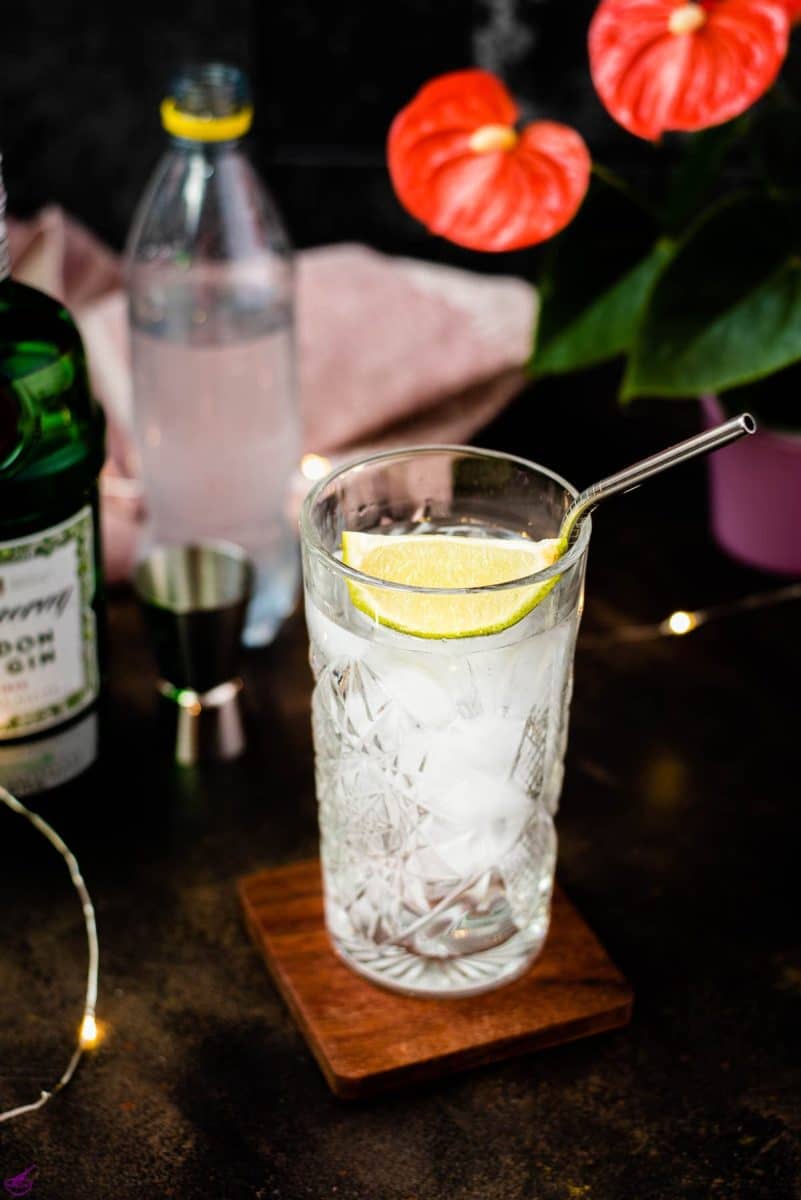
Whether you're someone who's been knocking back
National Gin and Tonic Day is on April 9th!
A Brief History of Gin & Tonic
Before it was ever used in a cocktail,
It wasn't until the 17th Century, during the fight for Dutch independence, though, that the spirit began to grow in popularity. A shot of "Dutch Courage" was taken by soldiers before going into battle. The British, who were fighting alongside the Dutch, quickly acquired a taste for this "Dutch Courage" and brought it back home.
Thanks to
During the 18th Century, it was again used for medicinal purposes to help prevent scurvy among sailors during long sea voyages. In order to prevent sailors from becoming deficient in vitamin C, they began mixing lime with
It was during this same time period that tonic water was added to the mix. Its origins can be traced back to South America, where the bark of the cinchona tree was used to treat malaria. The powder from the bark, known as quinine, would be mixed with water and sugar to help make it more palatable. It wasn't until the invention of carbonated water, though, that it made the leap to everyday drink.
The iconic duo of
Variations on the classic cocktail would lated become widely popularized in the United States during the Prohibition Era. "Bathtub
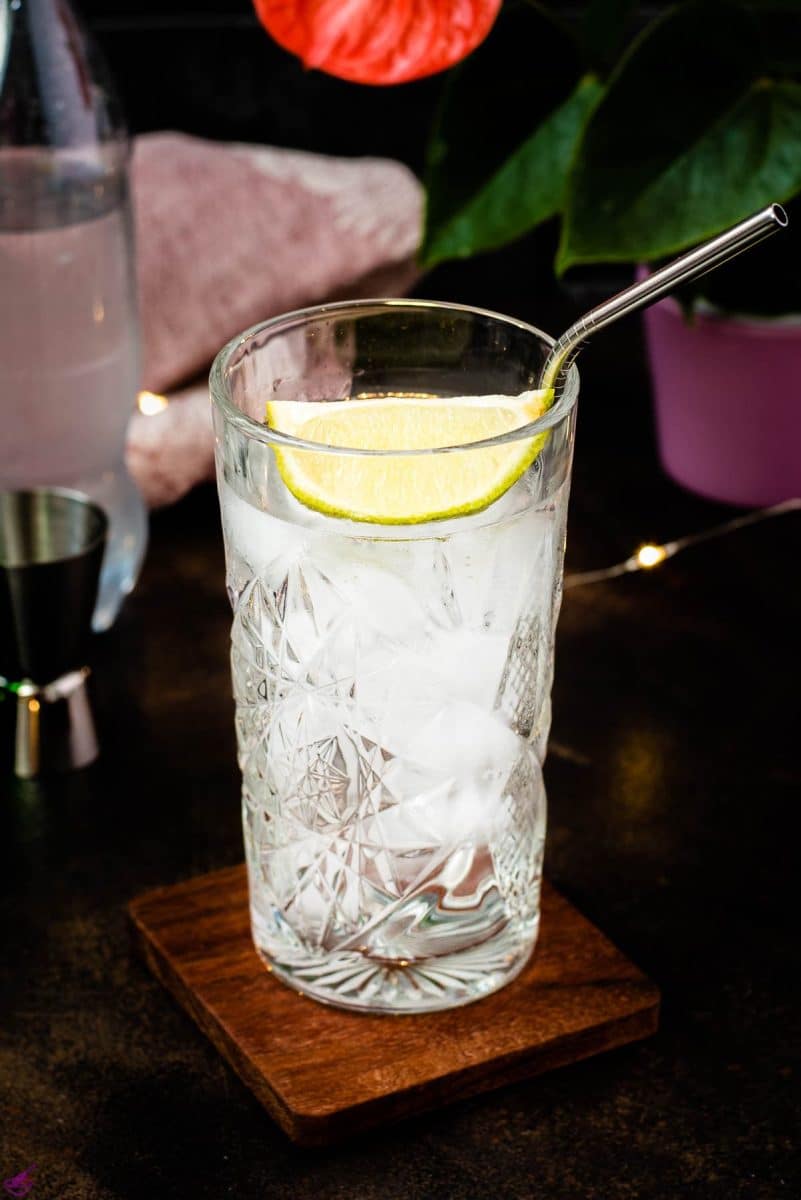
Different Types of Gin
In the simplest of terms, all gins are flavored with juniper berries and other botanicals, but did you know there's actually four main different kinds of
London Dry
If you're already familiar with popular brands of
Consumption of
London Dry gins are known for having a clean, crisp, pine-forward taste, with heavy notes of juniper.
Bombay Sapphire
This iconic blue bottle is instantly recognizable in any home bar or restaurant. Bombay Sapphire is best known for its sweet-taste flavor profile and smooth, crisp taste.
Typically $20 USD
Tanqueray
Another popular brand of London Dry
Beefeater London Dry Gin
While gins don't need to be made in London to be considered London Dry, Beefeater is still distilled in Kennington, and the recipe hasn't changed all that much in the past 200 years. It's known for its clean, crisp taste, with heavy juniper and citrus notes.
Old Tom
In 18th Century England, Old Tom was all the rage, but its popularity has weighed considerable over the past 200 years. In the advent of craft cocktails, though, Old Tom
Interestingly, no one really knows for sure where the name came from, or how exactly Old Tom should be made. Some distillers age it, others don't – some add in sugar, while others forgo any additional sugars. Today, it comes in all different flavors and colors, and it's best known for being slightly sweeter than London Dry.
Hayman's Old Tom Gin
While Old Tom gins are known for being sweeter than London Dry gins, top notes in Hayman's are peppery, but have strong notes of juniper and citrus – lending itself to a well-balanced, smooth finish.
Hammer & Son Old English Gin
If you're looking for something that's both sharp and sweet, Hammer & Son Old English
Plymouth
This style of
Plymouth Gin
If you enjoy earthy notes, you'll love Plymouth
Contemporary/New Western/New American
If you're looking for a bit of a twist on the classic, London Dry gins, you should try some Contemporary/New Western/New American gins like Aviation, Bluecoat, and St. George. These gins tend to focus more on floral and citrus flavors, treating them with the same importance as the quintessential juniper flavor in all gins.
Bluecoat American Dry Gin
Right off the bat, you'll be able to appreciate this
Aviation Gin
While you might already be familiar with this option thanks to Ryan Reynolds, you should absolutely check it out for yourself since Aviation
St. George Botanivore Gin
This
Different Types of Tonic
Schweppes Tonic Water
If you're looking for an affable option when it comes to tonic waters, Schweppes is your best pick. Founded in 1783, it's known as the world's first soft drink! It's full of history, and for a price that won't break the bank!
Canada Dry Tonic Water
If you want something that's great all on its own, I'd recommend grabbing some Canada Dry. It's delicious, and anyone with an upset stomach can tell you that it'll help you feel more settled.
Top Note Classic Tonic Water
For those of you who are feeling a little fancier, might I suggest Top Note Classic Tonic Water? This craft option is fairly new, and made from all-natural bitters of quinine, with top notes of lime zest.
Typically $30 USD for a 16-Pack
Fever-Tree Refreshingly Light Premium Indian Tonic Water
Fever-Tree Refreshingly Light Premium Indian Tonic Water is also a bit more expensive compared to Canada Dry and Schweppes, but it's still a trendy option among
Typically $34 USD for a 24-Pack

Best Pairing
One of the best things about
Popular variations include garnishing with lime wedge, lemon peels, or orange peels – along with their respective freshly squeezed juices. It's not unheard of to see other options like cherry tonic, grapefruit tonic, or even watermelon tonic!
If you're playing host and looking for something to cook up serve alongside a
Cheeses and berries are both fantastic pairing options. If you're going to serve your guests a
If you're planning to serve after-dinner-drinks, though, chocolates and fudge are also a nice compliment to the bitter notes and botanical flavors of the classic
If you're someone who likes to serve up something a big more unexpected, though, I recommend trying a paté! Interestingly, most patés are seasoned with juniper – the primary ingredient at play in
Gin and Tonic Ratio
For the perfect ratio of
Best Glass for Gin and Tonic - Highball
The high ball glass is the vessel of choice for many cocktails, but it's partially great for
🥘 Ingredients and Garnish for a Tanqueray Gin and Tonic
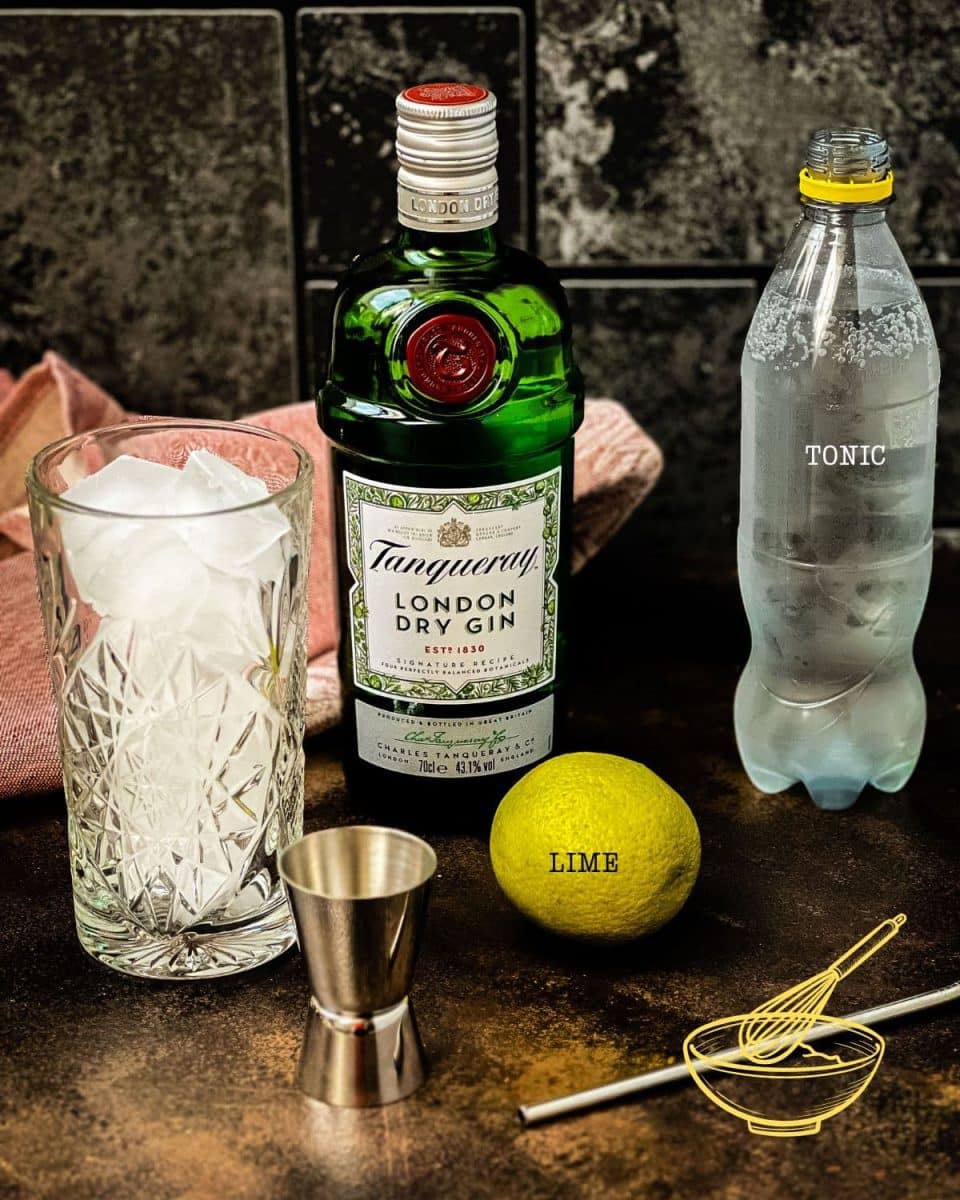
- Ice Cubes - to fill up the highball glass
- Tanqueray Gin - 1 ½ oz // 4cl // 40ml
- Tonic - To fill up the glass
See the recipe card for quantities.
🔪 How to make a Tanqueray gin and tonic
I recommend starting off with a chilled highball glass and filling it to the brim with ice cubes. Next, pour in 1 ½ oz // 4cl // 40 ml of your Tanqueray
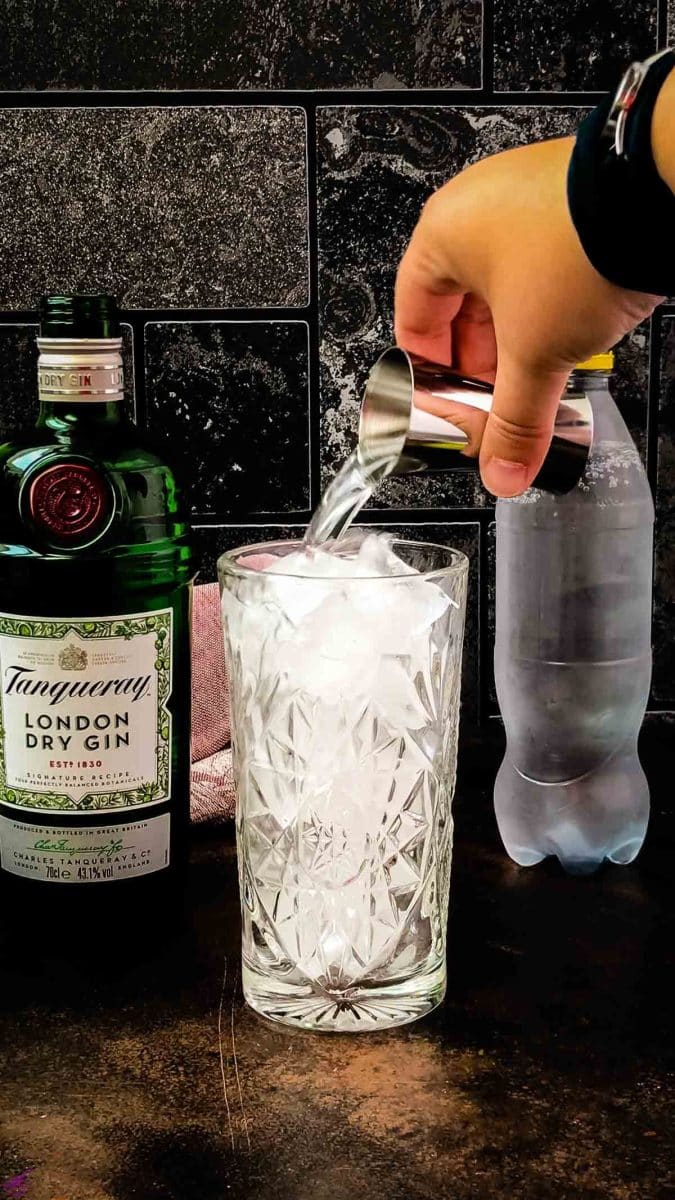
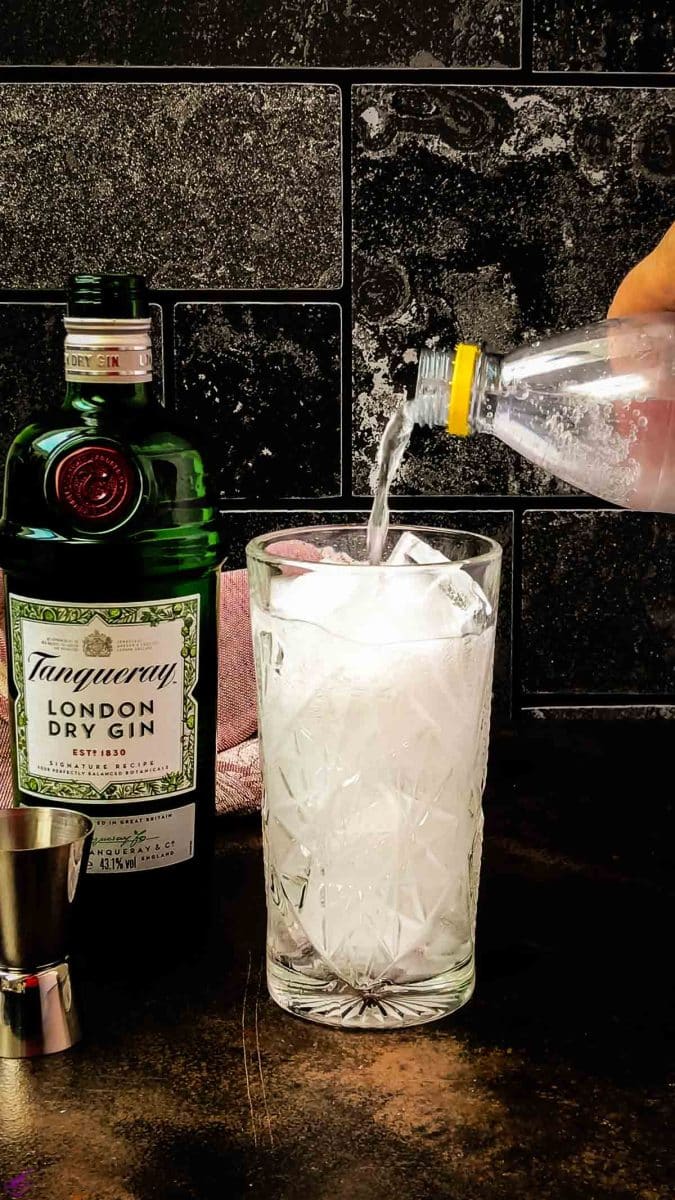
A typical highball glass will usually hold anywhere from 240 to 350 ml.

🎥 Video
🍽 Equipment
- Jigger
- Highball glass
- Drinking straw
💭 Top tip
When preparing your
And are you already wondering, "How do I chill a cocktail glass properly?" The most efficient way to get a perfectly chilled glass is to put them in the freezer beforehand. I usually like to give it at least a half hour, but if you're like me and plan to have friends and family over for backyard grilling and dinner parties this summer, you could also throw your glasses in the night before.
If you don't have that kind of freezer space or that kind of time between refills for your guests, another method you could adopt is fulling each cocktail glass with ice cubes. Once it comes time to build your drink, you can dump out the ice and start pouring the cocktail.
In an attempt to protect our environment, one final tip is that I highly encourage you to avoid using disposable straws whenever possible. If you can, opt to use either metal or paper straws or forgo them altogether.
🙋🏻 FAQ
Typically, the standard ratio is 2 oz of
When compared to other spirits,
You should pour your
One of the best things you can mix with
OTHER RECIPES FOR YOU TO TRY
How to Make a Refreshing Strawberry Spritz Cocktail
How to Make a Snowball Cocktail
Lovely Lavender Spritz Cocktail
If you make this recipe, let me know how you liked it by ★★★★★ star rating it and leaving a comment below. This would be awesome! You can also sign up for our Newsletter or follow me on Pinterest or Instagram and share your creation with me. Just tag me @combinegoodflavors and hashtag #combinegoodflavors, so I don't miss it.
📖 Recipe
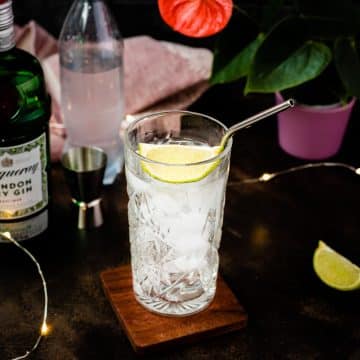
Tanqueray Gin and Tonic
Equipment
Ingredients
- Cubed Ice
- 1 ½ oz Tanqueray Gin
- Tonic to fill up the glass
- 1 cup Lime and drinking straw for garnish
Instructions
- Fill the glass with Cubed Ice.Cubed Ice
- Next add 1 ½ oz Tanqueray Gin.1 ½ oz Tanqueray Gin
- Fill up with Tonic (one high ball glass holds 240 (1 cup) to 350 ml (1 ½ cups))Tonic
- Garnish with a 1 cup Lime and drinking straw .1 cup Lime and drinking straw
Notes
The glass should be filled to the rim with ice to best chill the drink and minimize dilution.
In an attempt to protect our environment, we avoid using disposable straws whenever possible, using either metal or paper straws, or simply leaving them out if we can.
Garnishes should be placed next to the straw so that as much flavor as possible arrives while drinking.
Nutrition values are estimates only, using online calculators. Please verify using your own data.

⛑️ Food Safety
- Cook to a minimum temperature of 165 °F (74 °C)
- Do not use the same utensils on cooked food, that previously touched raw meat
- Wash hands after touching raw meat
- Don't leave food sitting out at room temperature for extended periods
- Never leave cooking food unattended
- Use oils with high smoking point to avoid harmful compounds
- Always have good ventilation when using a gas stove
For further information, check Safe Food Handling - FDA.





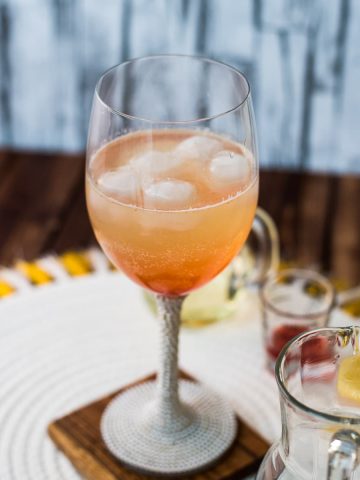


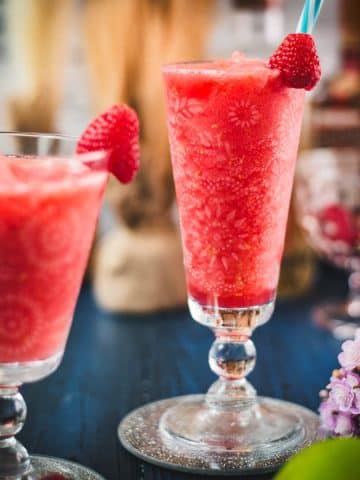
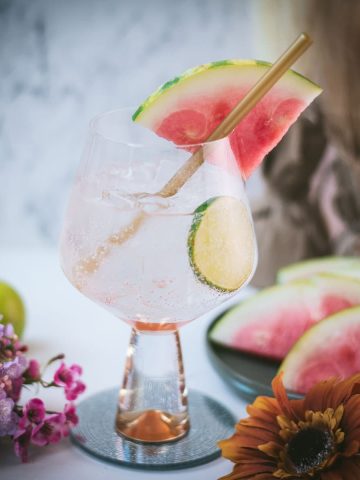
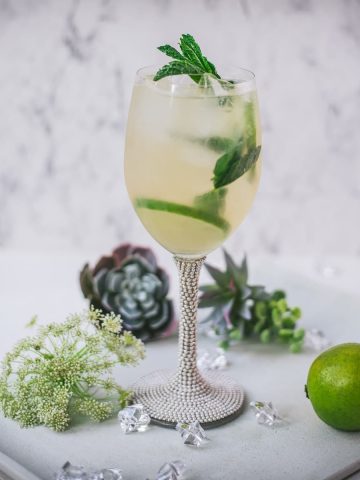
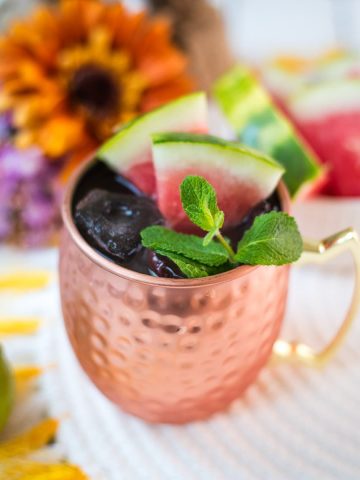


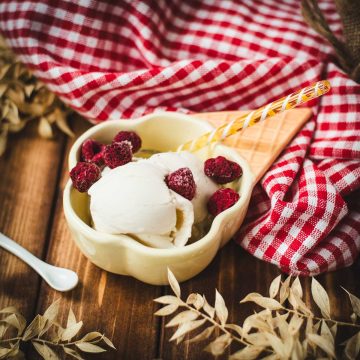
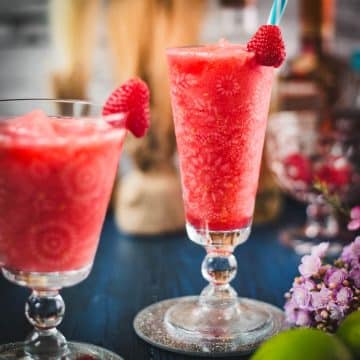
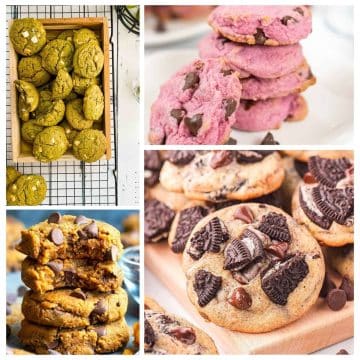
Claudia cristina Ciorteanu
This timeless cocktail, made with Tanqueray gin and tonic water, garnished with a slice of lime, is a delightful balance of botanical flavors that is sure to elevate your spirits. Cheers to a classic drink that never goes out of style! 🍸🍋 #GinAndTonic #TanquerayGin #ClassicCocktail
Nora
Cheers, Claudia! 🙂
Mina
Timeless and classy are the perfect words to describe this fantastic drink!
Nora
Yeah, Mina! Sometimes, it's the simple things that make happy. 🙂